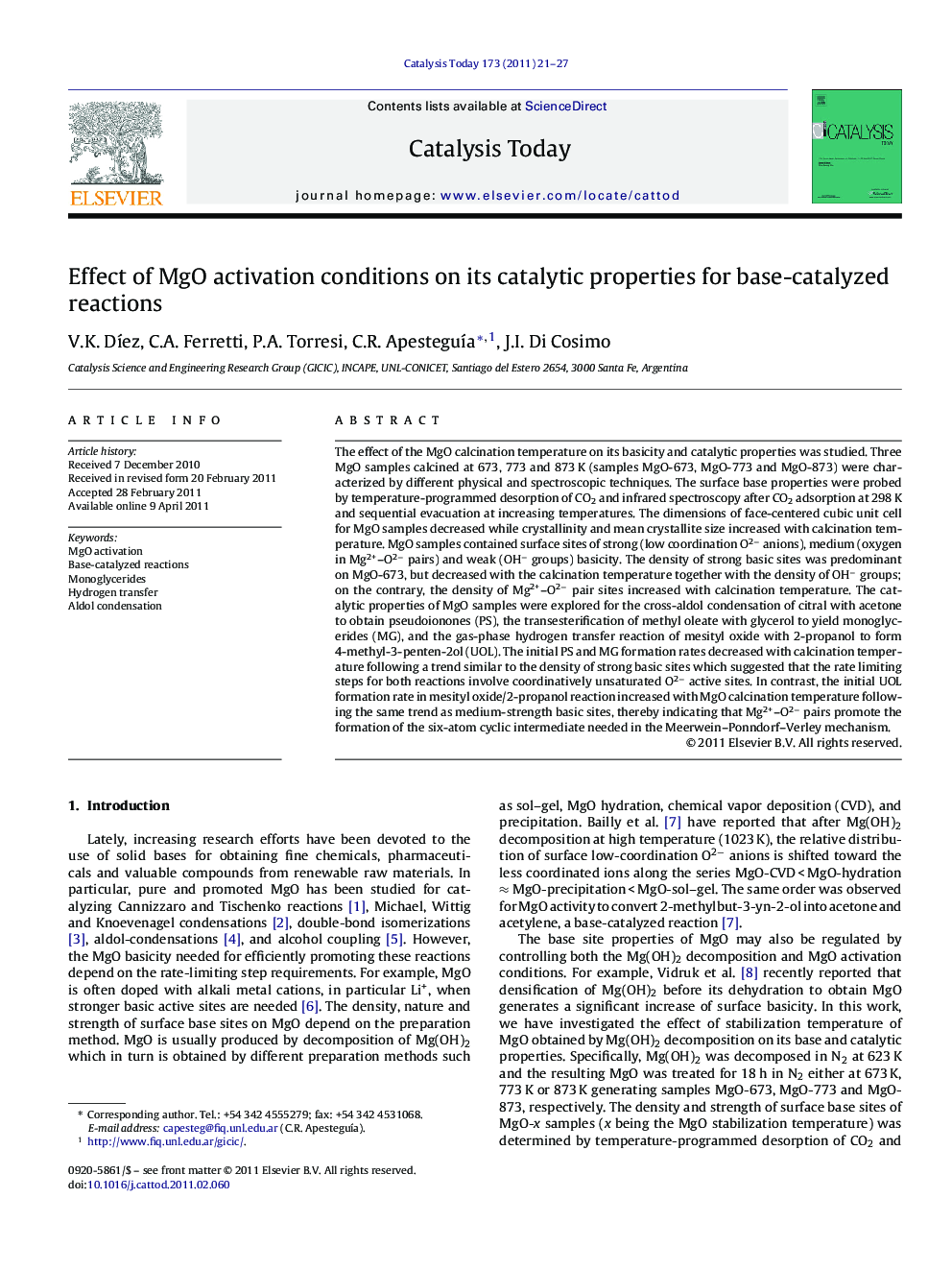| Article ID | Journal | Published Year | Pages | File Type |
|---|---|---|---|---|
| 55964 | Catalysis Today | 2011 | 7 Pages |
The effect of the MgO calcination temperature on its basicity and catalytic properties was studied. Three MgO samples calcined at 673, 773 and 873 K (samples MgO-673, MgO-773 and MgO-873) were characterized by different physical and spectroscopic techniques. The surface base properties were probed by temperature-programmed desorption of CO2 and infrared spectroscopy after CO2 adsorption at 298 K and sequential evacuation at increasing temperatures. The dimensions of face-centered cubic unit cell for MgO samples decreased while crystallinity and mean crystallite size increased with calcination temperature. MgO samples contained surface sites of strong (low coordination O2− anions), medium (oxygen in Mg2+–O2− pairs) and weak (OH− groups) basicity. The density of strong basic sites was predominant on MgO-673, but decreased with the calcination temperature together with the density of OH− groups; on the contrary, the density of Mg2+–O2− pair sites increased with calcination temperature. The catalytic properties of MgO samples were explored for the cross-aldol condensation of citral with acetone to obtain pseudoionones (PS), the transesterification of methyl oleate with glycerol to yield monoglycerides (MG), and the gas-phase hydrogen transfer reaction of mesityl oxide with 2-propanol to form 4-methyl-3-penten-2ol (UOL). The initial PS and MG formation rates decreased with calcination temperature following a trend similar to the density of strong basic sites which suggested that the rate limiting steps for both reactions involve coordinatively unsaturated O2− active sites. In contrast, the initial UOL formation rate in mesityl oxide/2-propanol reaction increased with MgO calcination temperature following the same trend as medium-strength basic sites, thereby indicating that Mg2+–O2− pairs promote the formation of the six-atom cyclic intermediate needed in the Meerwein–Ponndorf–Verley mechanism.
Graphical abstractFigure optionsDownload full-size imageDownload high-quality image (208 K)Download as PowerPoint slideHighlights► The MgO basicity may be regulated by controlling the solid activation conditions. ► The density of strong base sites on MgO decreases with the calcination temperature. ► The site density of medium-strength basicity increases with calcination temperature. ► The MgO catalytic properties are modified by increasing the calcination temperature.
